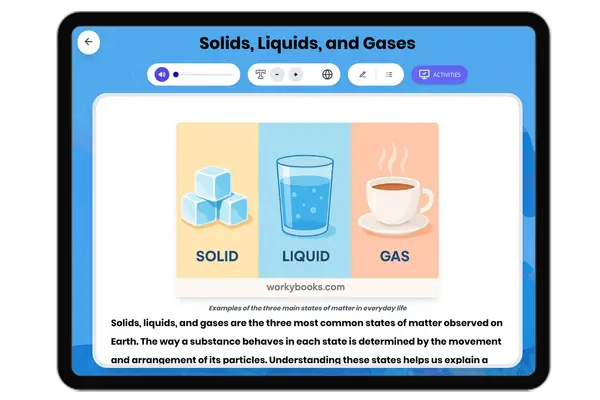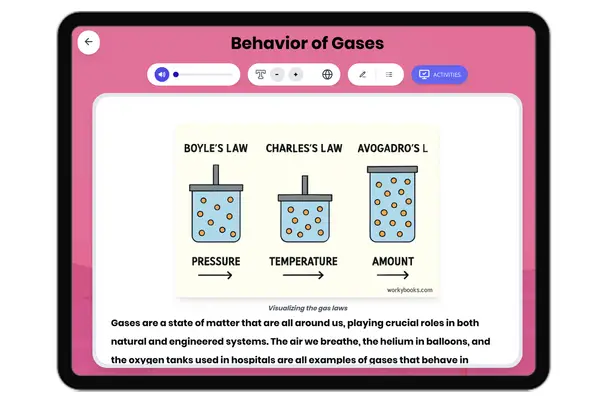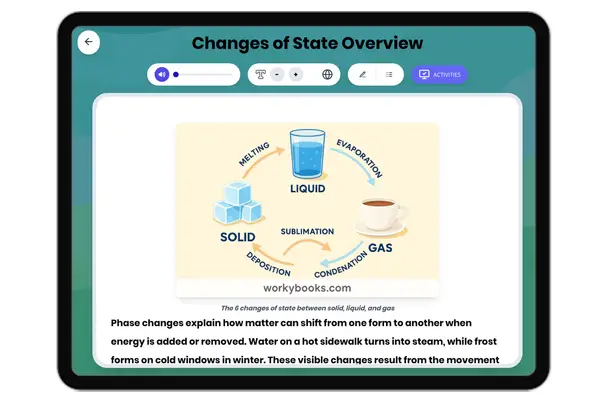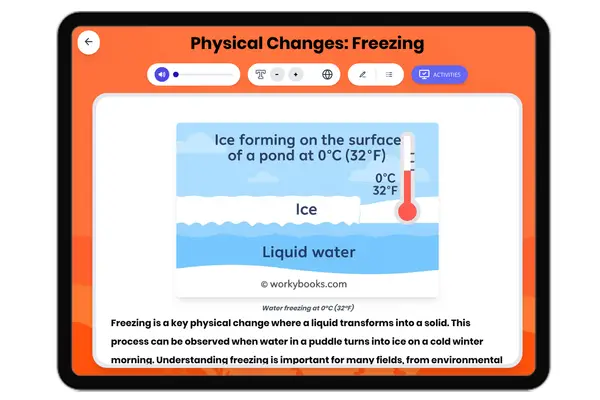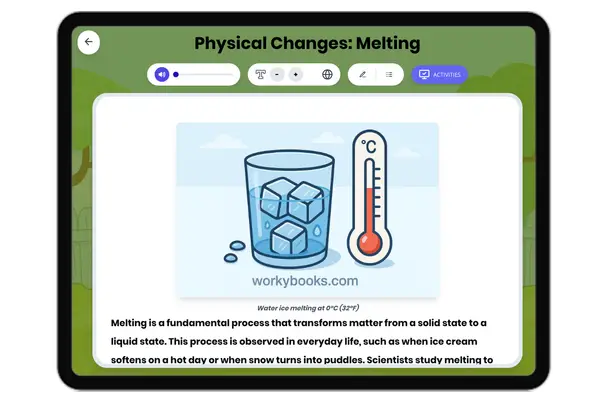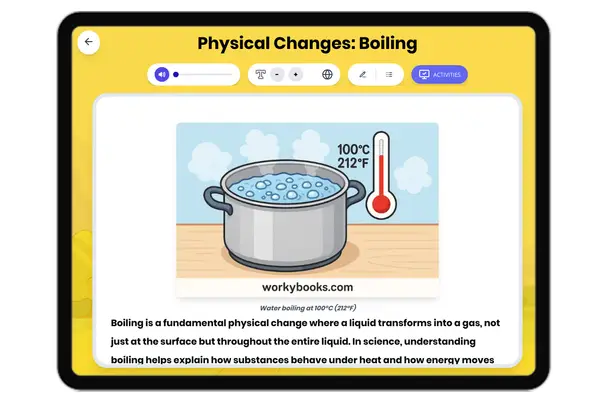Scientific Investigations — Reading Comprehension
Premium Resource
Grades
- 5
- 6
- 7
- 8
Standards
- MS-ETS1-1
- MS-ETS1-2
- MS-ETS1-3
- MS-ETS1-4
- MS-PS1-4
- SEP1
- SEP3
- SEP4
PRINT+DIGITAL RESOURCE
This learning resource is available in interactive and printable formats. The interactive worksheet can be played online and assigned to students. The Printable PDF version can be downloaded and printed for completion by hand.
About This Reader
This passage, aligned with NGSS standards for grades 6-8, introduces students to the process of scientific investigation. It explains the steps of scientific inquiry—observation, hypothesis, experimentation, data analysis, and conclusion—using relatable examples such as testing which brand of paper towel absorbs the most water. The passage emphasizes the importance of fair testing, control variables, and critical thinking in drawing reliable conclusions. It also connects the scientific method to real-world applications in health, technology, and society. The content is structured to support comprehension with a glossary, multiple-choice questions, writing prompts, and graphic organizers, making it suitable for diverse learners. Audio integration and Spanish translations further enhance accessibility. This resource is ideal for middle school science classrooms seeking to build foundational skills in evidence-based reasoning and experimental design.
Perfect For:
👩🏫 Teachers
- • Reading comprehension practice
- • Auto-graded assessments
- • Literacy skill development
👨👩👧👦 Parents
- • Reading practice at home
- • Comprehension improvement
- • Educational reading time
🏠 Homeschoolers
- • Reading curriculum support
- • Independent reading practice
- • Progress monitoring
Reading Features:
📖
Reading Passage
Engaging fiction or nonfiction text
❓
Comprehension Quiz
Auto-graded questions
📊
Instant Feedback
Immediate results and scoring
📄
Printable Version
Download for offline reading
🔊
Read Aloud
Voice-over with word highlighting














